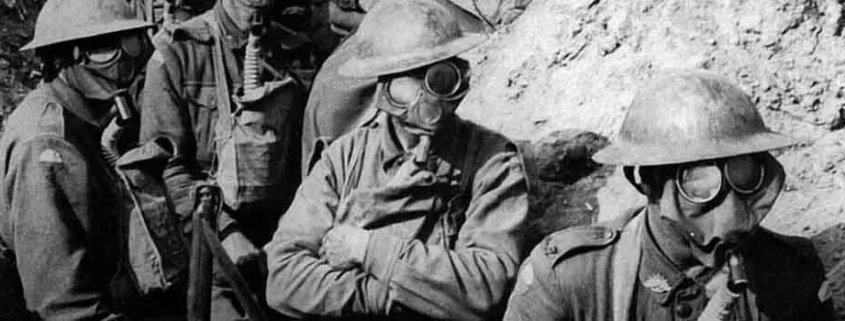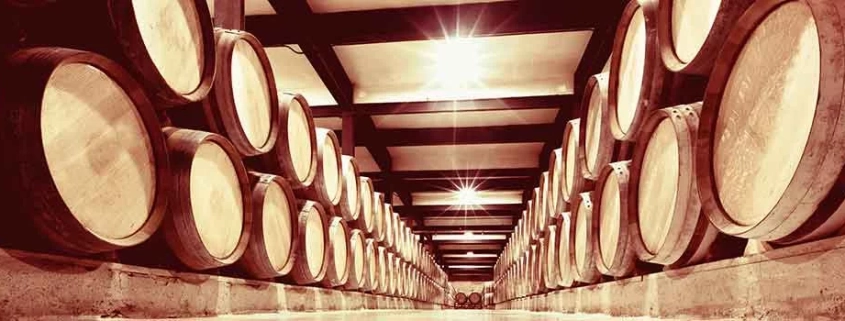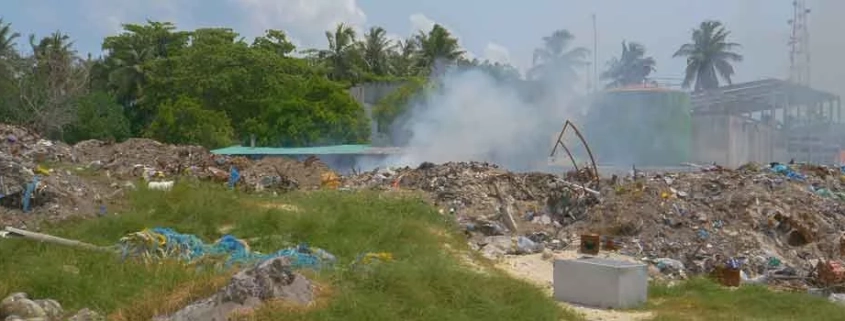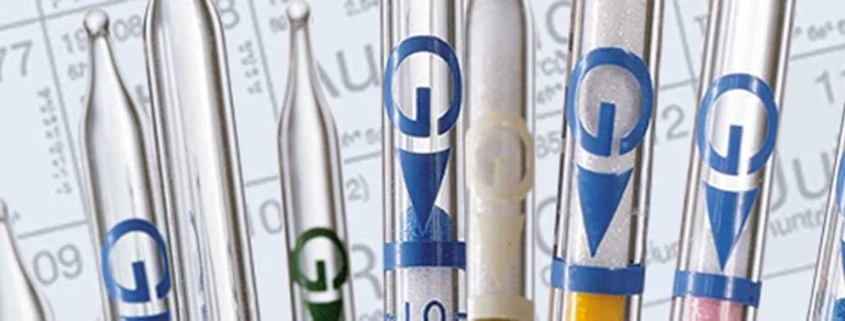Although there were patents, known processes, and early stages of respiratory protective equipment before the early 20th century, the development of modern gas masks occurred during World War I to protect soldiers from new chemical weapons used during the conflict. Let's take a look at the history of World War I gas masks.
Chemical weapons during World War I
Chemical weapons of the early 20th century
Since ancient times, chemical and biological weapons have been used in wars. Historians report that poisons (rye spur, snowdrop root, curare) were used in many of the wars and military conflicts that occurred throughout the ages. In the late 19th century, wars—especially the Crimean War and the American Civil War—privileged the production of artillery weapons such as cannons. But at that time, chemical weapons was also being developed and by the headquarters sulfur oxide , picric acid or chlorine Bullets filled with were used. Before the start of World War I, France also produced a choke grenade. By the early 20th century, the chemical industry of the German Empire was very developed, and this country quickly became a world leader in chemistry and was able to rapidly develop chemical weapons, which were developed throughout the war. Despite the signing of the Hague Convention in 1899 and 1907, France, Germany and many other countries did not stop their research and did not give up using these weapons during the First World War. Therefore, the design of an effective World War I gas mask was extremely important.
World War I chemical weapons
Chemical weapons were used from the beginning of the First World War: the French army in August 1914 with tear gas used new loaded grenades (originally created for the Paris police). Germany's chemical industry used it to develop chlorinated weapons.
chemical warfare The escalation was initiated in 1915 with the use of gas shells on the Eastern Front on January 31. This German attack failed due to the very cold weather on the Polish front hindering the spread and effects of the gas. Nevertheless, on 22 April 1915 in Flanders, and particularly in the Ypres area, Germany launched its first large-scale gas attack. More than 150 tons of pressurized chlorine was released and dragged into the Allied trenches. gas cloud poisoned approximately 15,000 soldiers and this chemical attack caused more than 1,000 deaths. After this date, the research and use of chemical weapons increased on both sides of the front. And providing every soldier with a World War I gas mask became a priority.
in May 1915 Attacks using mixtures of phosgene, chlorine, and carbon monoxide It caused the death of more than 600 people on the Russian front. German chemists continued their research and designed a new substance based on bromine. In September 1915, France bullets filled with carbon disulfide launched the first major gas attack (highly toxic at high concentrations, this product quickly wears off when dispersed into the air). In 1916, French shells filled with phosgene caused heavy casualties in German trenches. Used by the Germans in July 1917 and later resynthesized by the French army mustard gas , causing numerous casualties on both sides of the front until the end of the war.
During World War I hydrogen cyanide, arsine, bromine, chlorine, phosgene and other chemical elements are increasingly deadly chemical weapons created . It is estimated that more than 130,000 tons of chemical weapons were used during World War I. Such weapons caused more than 90,000 deaths during the conflict.
Effects of World War I chemical weapons
Different chemical weapons used from 1914 onwards – such as tear gas – caused irritation (especially eye pain), temporary disability, iç ve dış lezyonlara neden olan ve ayrıca to death It releases harmful substances that can cause Various devices that soldiers could use as World War I gas masks were not always effective enough to protect soldiers.
During World War I, as chemical weapons were being developed, soldiers suffered, coughed blood, suffocated, suffered chemical burns, went blind, and died as a result of these attacks. Among the most well-known (and used) gases during World War I, mustard gas – also known as Yperite – was particularly destructive. Indeed, the chemical compound was used by both sides and caused great physical suffering (burns, suffocation, blindness, skin reactions, respiratory infections, and death). Using gas as a chemical weapon, incapacitating the enemy, provoking retreat, and causing psychological suffering. It was designed to demoralize and weaken the soldiers.
The poisonous gas used during the First World War is now used as a tool to protect people from its effects. gas with his mask can be purified, but this was not always the case.
World War I gas mask
Soldiers wearing makeshift respiratory protection equipment
At the beginning of World War I, soldiers were inadequately protected against gas attacks. Indeed, the modern gas mask had not been developed and soldiers later made temporary respiratory protection systems They developed . In 1914, only German soldiers were equipped with respiratory protection (essentially simple gags).
To protect against chemical weapons, and especially chlorine, a Canadian medic recommended that soldiers put a thick cloth over their mouth and nose soaked in water, baking soda and urine. found in urine ammonia, To avoid the effects of chlorine clouds Reacts with chlorine .
After the first major chemical attack at Ypres in 1915, France and its allies respiratory protection equipment started a serious study on . World War I gas mask development and production had to be done quickly. Compressed respiratory protection systems were rapidly developed. The Allies first created gags by copying German front-line units. These consisted of a cloth envelope filled with cotton soaked in hyposulphite solution. However, this envelope placed on the face with four straps was not enough to protect the entire respiratory system because these masks were not airtight. Despite this, compressed respiratory protection systems were rapidly developed. More effective solutions such as P2 stamps and S2 bags appeared on the Allies' side, followed by T and TN stamps.
French military forces to protect the eyes and part of the face adding goggles to the gas defense equipment array continued to make progress in developing protective equipment. However, it was not until 1916 that these glasses became airtight, adjustable and truly effective against gases. British forces appeared to be more effective on their side. titles They developed . They were later used by French soldiers as an addition to muzzles and goggles.
For each new substance, neutralizing and protective solutions for the eyes and respiratory tract must be developed. Of course, they must be effective against new gases, but they must also remain effective against previous substances still in use. This is conducted between chemists and engineers from both parties. It is a technical war.
World War I gas masks
In the autumn of 1915, German troops were equipped with a type of modern gas mask. Gummimaske is made of rubber fabric and a replaceable chemical air purification system cartridge with filter It was the first full face mask. These first cartridges are herbal coal It consisted of hyposulfite and soda ash. This particularly well-thought-out mask was impermeable to tear gas and mustard gas and effective protection against high phosgene concentrations was providing . However, the purification filter was ineffective against phosgene when introduced.
On the Allied side, the first World War I gas mask appeared and was distributed to the front on December 6, 1916. This was a full face mask that covered the entire face and used a compression system as a filter. Thanks to a rectangular plastic visor, this mask good field of view provided. This gas mask was placed on the face with 2 elastic straps. This mask evolved with eye cups throughout its development and was able to protect soldiers for 5 hours.
In August 1916, a new gas mask version inspired by German World War I gas mask units was designed and produced in January 1917. However, its use only began in January 1918. ARS mask (special breathing apparatus) or MCG This new mask, called the (chemical warfare mask), was similar to what Allied soldiers had to face at the time. It was the best protective unit against gases. Breathable for efficient protection air purifier cartridges It is secured with . Thanks to the adjustable elastic straps, the ARS covers the face well and provides good protection for the eyes and respiratory system. As it develops, this mask, filtering cartridges filled with agglomerated coal and glycerin water used various types of filters, including . With ARS gas masks, the old M2 unit was increasingly relegated to emergency function. Same principles and functions as escape masks – eebds and self-rescue masks – used in emergencies today.
Produced by thousands of units, these first World War I gas masks would later be developed and improved until the Armistice of November 11, 1918. They would then continue to be produced for new civilian applications after the war. The air-purifying and atmosphere-providing respiratory protective technologies developed during World War I are the first stages of the tools and equipment we now use on a regular basis. Modern gas masks, filter cartridges, escape respirators and self-rescuers, millions of firefighters, workers and operators It is used worldwide every day to protect across many industries through thousands of applications .










